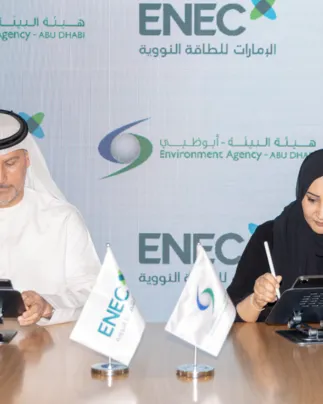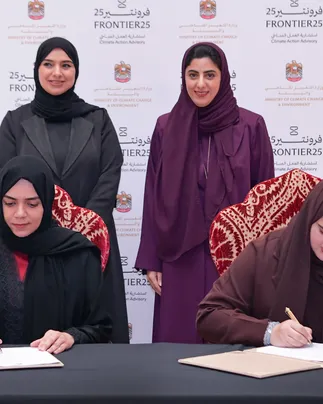As part of a pioneering scientific collaboration, the Environment Agency – Abu Dhabi (EAD) and the International Center for Biosaline Agriculture (ICBA) have completed the first-ever population genomics study of the Ghaf tree (Prosopis cineraria) in the country, revealing significant genetic insights critical for conserving this iconic desert species and supporting the development of climate-resilient ecosystems across the UAE.
As the national tree of the UAE, the Ghaf is revered for its ecological, cultural and symbolic value. It stabilises dunes, enriches soils and supports biodiversity in arid environments. Yet despite its importance, little was previously known about the species’ genetic variation or evolutionary history – until now.
The study, conducted by specialists at the Plant Genetic Resources Centre of the Environment Agency - Abu Dhabi and the International Center for Biosaline Agriculture, aimed to evaluate the whole-genome re-sequencing of Ghaf population collected from across the UAE. The samples included coastal plains, valleys, sand dunes, and mountain slopes.
The study has uncovered four genetically distinct groups. Through laboratory analysis of samples classified according to collection areas, one of these groups, detected in the foothills of the Hajar Mountains and the Jebel Hafeet National Park Reserve in Abu Dhabi, is distinguished by a genetically unique population that may represent an evolutionarily unique lineage compared to the other samples.
The findings offer a wealth of data that will support prioritising and optimising seed banking of these unique populations, and support rehabilitation and restoration, including national Ghaf Tree planting initiatives. Moreover, the identification can be linked to environmental adaptation and stress response, providing valuable insight for guiding assisted gene migration and climate-smart restoration, especially in areas affected by desertification or salinity.
Digital tools were also developed as part of this project, integrated with an interactive genomic map that illustrates the relationship between genetic variations among the Ghaf populations documented in the study. These tools will help EAD's experts, conservationists, and decision-makers plan long-term conservation sustainability strategies rooted in evidence-based science and accurate genetic data.
Ahmed Hashmi, Executive Director of the Terrestrial and Marine Biodiversity Sector at EAD, commented on the significance of the findings: “The Ghaf tree is a powerful symbol of our natural heritage and an enduring emblem of life in the desert. Through this pioneering collaboration with the International Center for Biosaline Agriculture, we have unlocked vital genomic data that will shape the future of Ghaf conservation in the UAE, which is essential for strengthening its resilience in the face of climate change. With this knowledge, we can better protect genetically distinct populations, prioritise restoration efforts based on a clear scientific approach. This is a shining example of how advanced research and innovation can directly support national biodiversity goals and secure a sustainable ecological legacy for generations to come.”
Dr. Tarifa Alzaabi, Director General of ICBA, said: “This landmark study reflects International Center for Biosaline Agriculture’s deep commitment to harnessing cutting-edge science in support of the protection and sustainable management of native biodiversity. The Ghaf tree carries profound ecological and cultural significance in the region, and by decoding its genetic blueprint, we are equipping policymakers and conservationists with the knowledge needed to ensure its preservation for generations to come. More than a scientific milestone, this research sets a precedent for how genomic tools can inform conservation strategies in arid and saline environments and strengthen long-term climate resilience.”
With the publication of the paper, EAD and ICBA are eager to share these insights as they continue to expand the scientific foundation for biodiversity stewardship in arid and semi-arid regions. This research not only marks a milestone for desert ecology in the Arabian Peninsula but also sets a precedent for integrating genomic science into national conservation planning.








%2025-11-2025%20MM%201-0-323-0-404-crop-aspect-NORTH.webp?k=85104e2a01)

